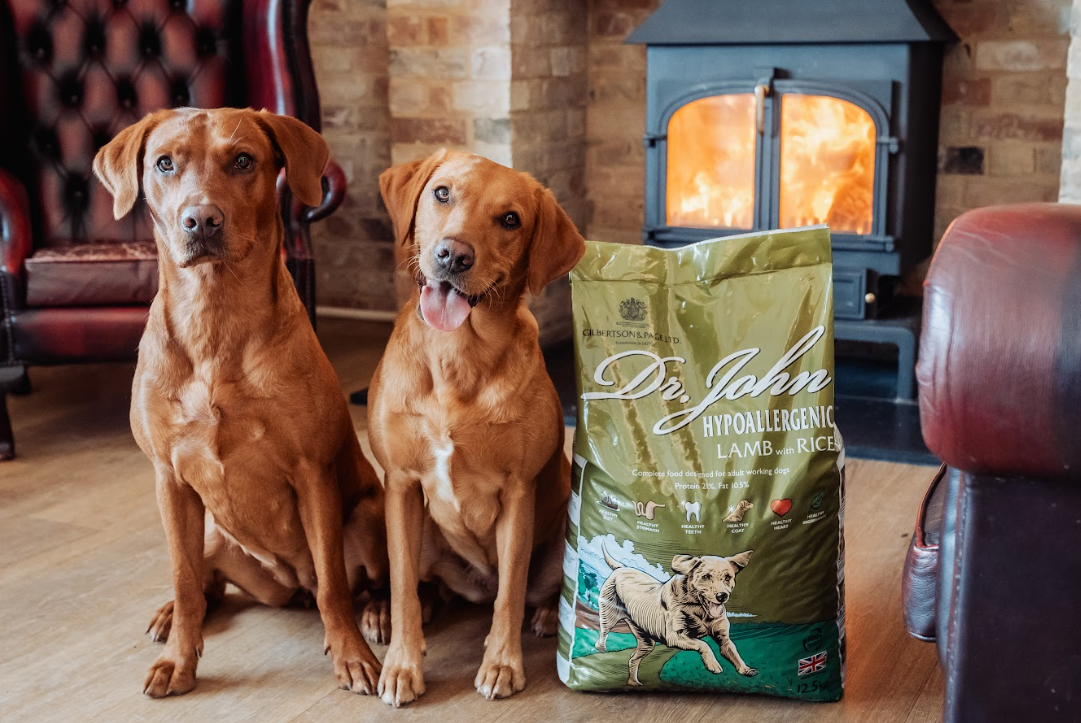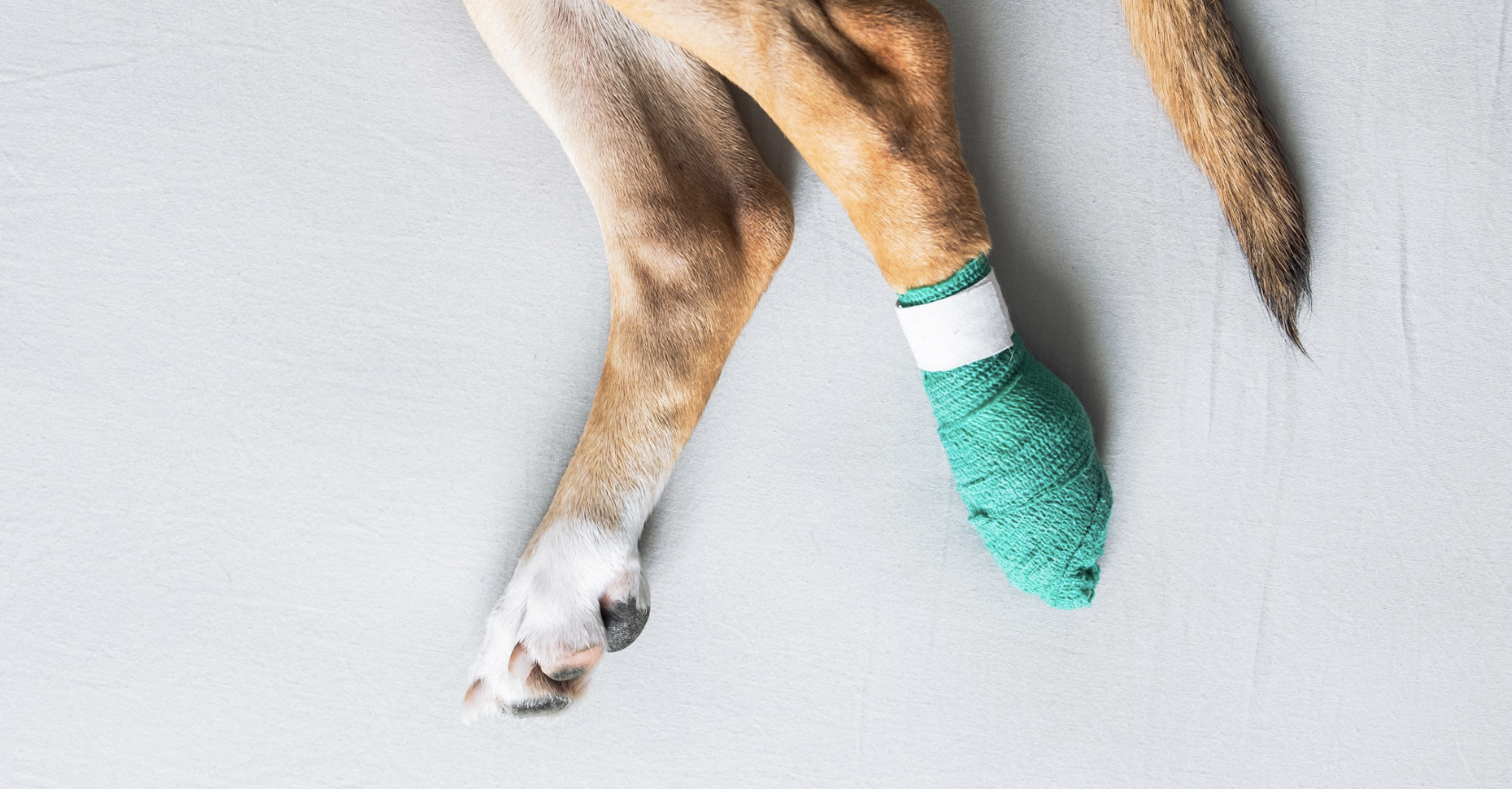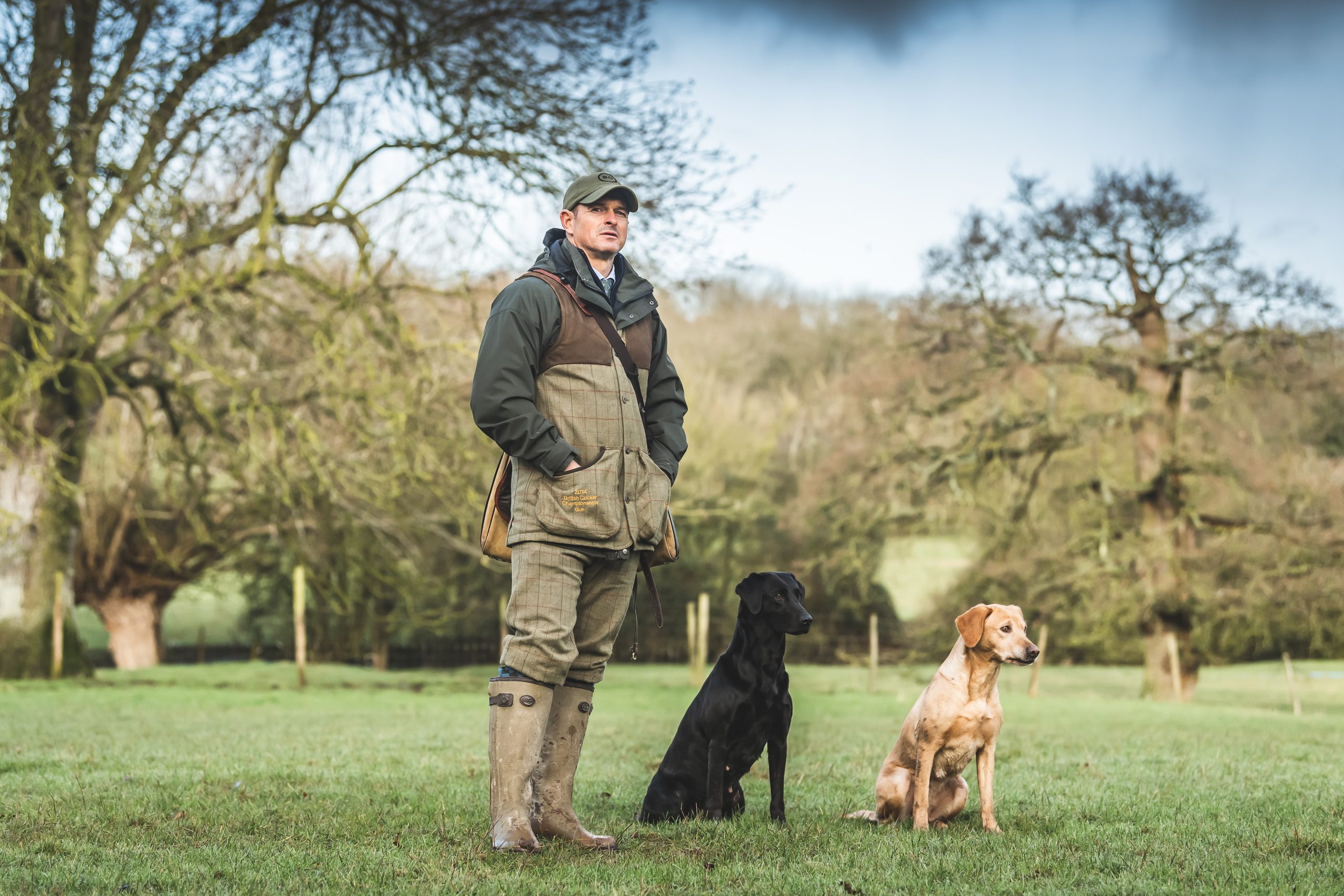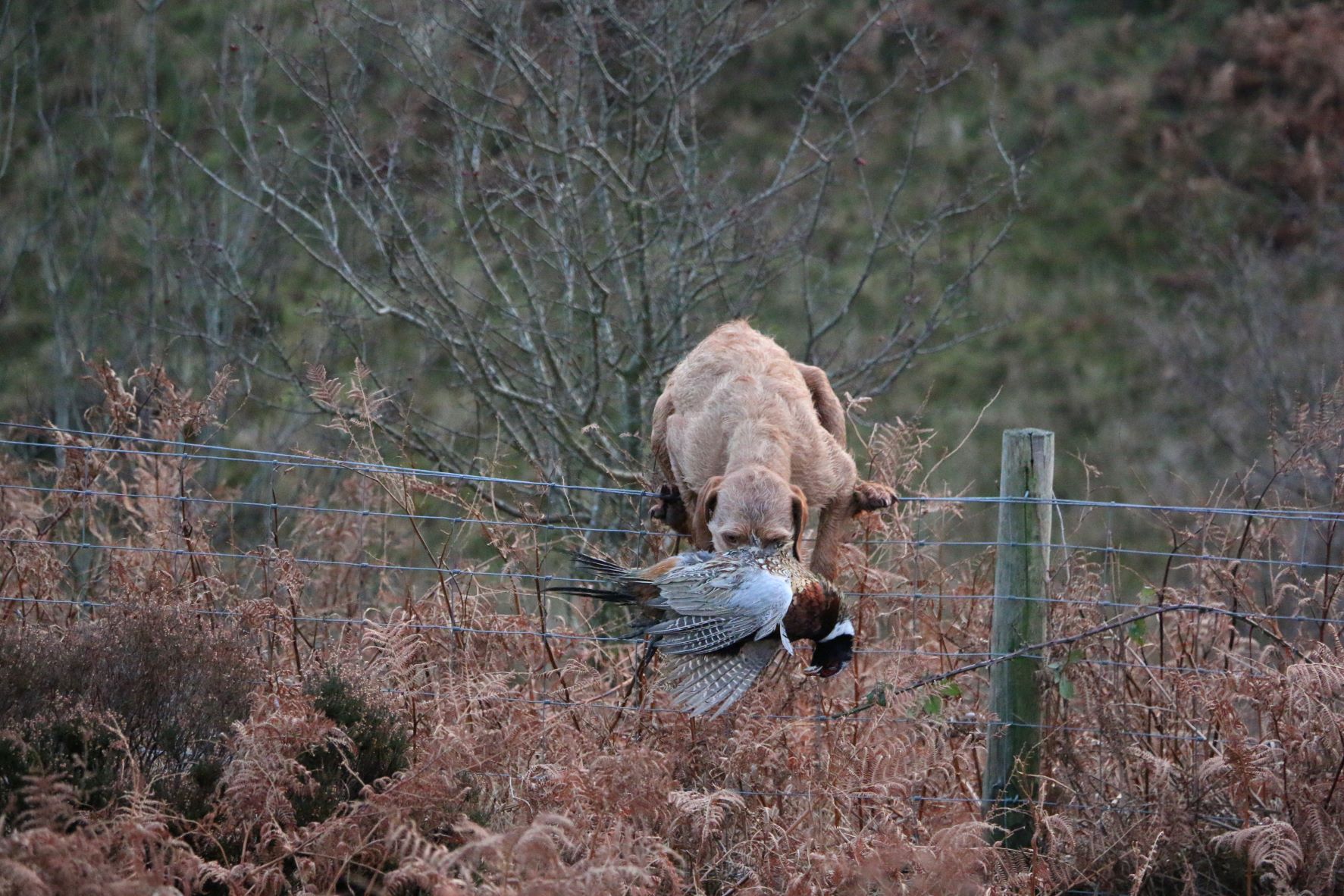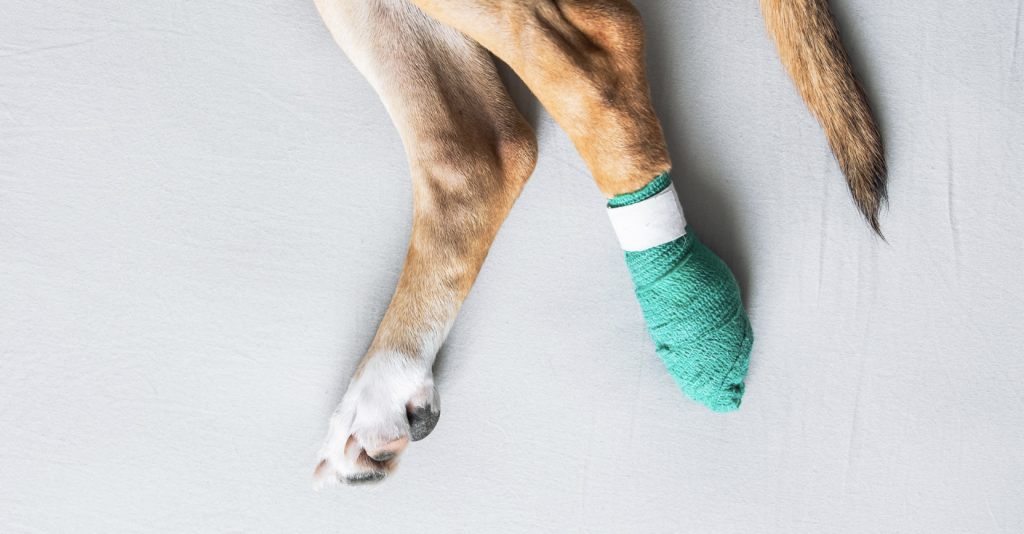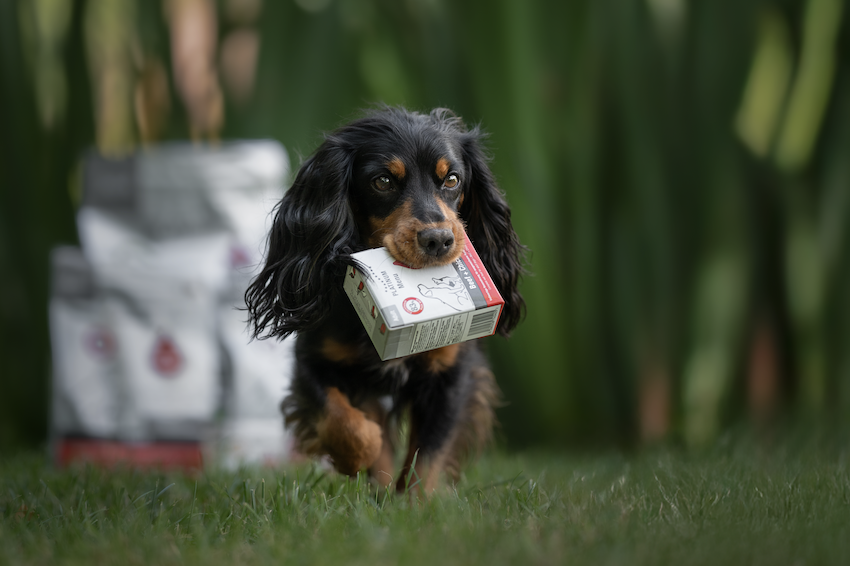Where the cracks appear
Our working dogs put a tremendous strain on their athletic bodies and inevitably injuries do occur. But when and where might trouble strike? Veterinary physiotherapist Sarah Guffogg uncovered some interesting details during her Masters research.
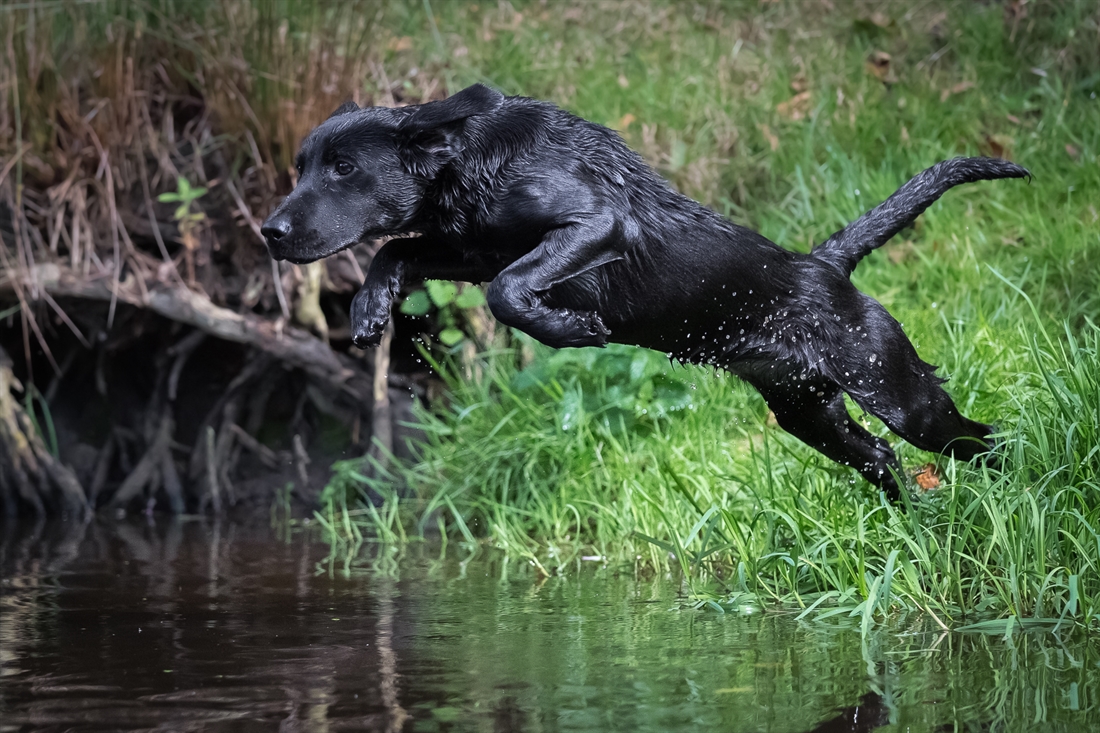
Research into the specifics of injuries to working gundogs in the UK is very limited. It has been reported that vets are concerned about the lack of research into the physical effects on dogs of different sporting disciplines. To effectively enable vets and associated professionals to successfully treat, rehabilitate and maintain a healthy working gundog it is vital that more detailed evidence is provided on the working conditions and demands on the working gundog’s body.
As owners, we know the nature of the work involved for working gundogs and the environments they work in. Whether in thick undergrowth, working the grouse moor, or out on the water, they are exposed to many different injuries.
Working gundogs should be considered as athletes and as such require training and conditioning to optimise their performance. As with athletes in any sport, injuries can and unfortunately do occur. However, extensive and in-depth knowledge of working dogs and the life they lead is not readily available to those outside of the anecdotal world of the shooting and gundog fraternity.
No average pet
The cardiovascular system (heart and lungs) and the musculoskeletal system (joints, bones, muscles, tendons and ligaments) come under huge strain during the lifetime of a working gundog. Athletic dogs are required to use different muscles compared with the average pet and for longer periods of time. The last research carried out into working gundog injuries during the season is now more than 10 years old and the majority of working gundogs featured in this were picking-up dogs.
Advances in nutrition have changed the diet of gundogs with foods being specifically made and targeted towards the canine athlete. Raw feeding has increased in popularity with many people now choosing this option. The availability of nutrients within the diet now allows the dog to perform optimally.
More disposable income and an increasing number of commercial shoots have led to the development of the professional picker-up and beater. This is often a paid position and the owner and team of dogs will be out for up to five days of the week. Increased days in the field increase the likelihood of injury. To prepare the dog and maintain fitness and health, some conditioning is required. Some owners now utilise professionals to develop the condition and fitness of the dog and also following injury to speed up recovery.
The Raw Data
I was frustrated by the lack of information available on working gundogs so I designed a questionnaire structured to allow me to look at breed, age, job role and the number of days worked in relation to injuries to gain a full picture. The questionnaire was made available on a number of shooting and country sports related pages. I was extremely grateful for those who filled out my questionnaire allowing me to collect survey responses for 629 dogs. The injuries were separated into five groups;
- Group 1: Injury to the pads, claws or webbing of the feet
- Group 2: Injuries to the tail and other wounds
- Group 3: Musculoskeletal injuries including joints, fractures, muscles, tendons and ligaments
- Group 4: Injury to the eye and other incidences which do not fit into a group
- Group 5: Dogs who had no injury
The injuries of course ranged in severity with things like minor cuts not requiring veterinary attention. Out of the 629 dogs, 212 (34 per cent) of these were injured and of those dogs injured 51 per cent received veterinary treatment.
Pads, claws and webbing
Group 1 injuries can range in severity and complications. A split, torn or damaged claw is extremely painful and severe lameness is often seen, accompanied by profuse bleeding. Pads are essential to shock absorbance and braking for the dog but they are open to laceration and puncture. Often pad injuries are noticed only during a period of rest as the dog will carry on causing further damage and bruising to the soft tissue. Altered gait patterns such as the way the dog walks, moves and carries itself during recovery causes off-loading of the limb which can lead to atrophy (muscle wastage) of the affected limb and hypertrophy (over development) to the opposite limb. This can also potentially affect the pectoral (chest) muscles and neck muscles when hind limb injuries have occurred.
Tail Injuries and Other Damage
Wounds can range from minor cuts and abrasions through to deep lacerations requiring veterinary attention. They can affect the surface tissue (skin) or penetrate deeper into the fascia (a connective tissue found throughout the body) or muscle tissue. In some cases, dependant on the location and depth of the injury tendons, ligaments and nerves can also be affected.
Tail injuries (group 2) are most common among dogs which are not docked, although injury is still possible in docked dogs. Due to the location of the injury and complications with healing the area research has shown three quarters of dogs will have a recurrence of a tail injury, with just under half needing amputation. After new research was carried out Scotland amended the Animal Health and Welfare (Scotland) Act to now allow the docking of tails in some breeds, which I believe is a positive step forward following the initial blanket ban in 2006. The research highlighted that docking was beneficial to the welfare of the dog to prevent injury.
Limber tail or swimmer’s tail seems to be becoming more prevalent, however this could be due to increased owner awareness. Limber tail occurs when the blood flow to the muscles of the tail is reduced, this can be due to injury, impact or sudden changes of temperature.
Musculoskeletal injuries
As athletes, working gundogs are susceptible to musculoskeletal injuries (group 3) and the varied terrain and physical requirements of the role can lead to a multitude of problems. I know there are days I struggle to walk on the terrain, let alone run and push through undergrowth taller than the dog.
Inherited conditions such as hip and elbow dysplasia, where the joint is malformed from birth, will often limit the working ability and longevity of the dog even with treatment. In mild cases or in stoic dogs symptoms may not become apparent till later in life. Joint problems can affect the development of muscles which support the joint, this can limit performance and cause intermittent lameness, which leads to days off and reduced fitness levels making them more susceptible to injury. Joint injuries and conditions predispose the dog to future issues including osteoarthritis (OA) and degenerative joint disease (DJD). Both of these can be very painful and are often career ending or limiting.
Fractures can occur when a dog jumps an obstacle and lands awkwardly on the uneven ground which is seen in the shooting field. Other accidents include crashing into other dogs, a trip or fall running and unfortunately through accidents with vehicles. A fracture can be a crack in the bone or where the bone divides into two or more pieces and separates. Dependent on the severity of the fracture surgery may be required, followed by rest and rehabilitation to aid a full recovery.
Muscle tears and sprains can be common due to the fast turns, tight spaces and uneven terrain the dogs work on. A muscle sprain or tear occurs when the fibres within the muscle are put under strain. Tears can be immediate or develop over time. A sprain or tear can occur in the middle of the muscle or where the muscle and tendon join, the musculotendinous junction. Usually the owner will rest the dog and wait a few days up to a week before seeking veterinary help. This often means many injuries which would benefit from early treatment are missed.
Overuse of a muscle gradually leads to a breakdown of the fibres which in turn leads to a more severe injury, longer recovery time and an increased risk of re-injury in the future. A reduction in performance and mobility is often seen. Muscles around the shoulder, in the lower back and the hind limbs are the most common muscles to sprain and tear.
Tendon injuries in working gundogs can occur, although they are less common than ligament injuries. The most common tendon injury seen in working gundogs seems to be bicipital tenosynovitis, this is where inflammation of the biceps tendon or its surrounding synovial sheath found in the front leg occurs.
Cruciate ligament issues often occur in sporting dogs, specifically injury to the cranial cruciate ligament found in the knee. The cruciate ligament is responsible for stabilising the knee and this damage can occur both traumatically or through degeneration. Risk of injury appears independent of discipline but given the torsional strain placed upon the joints of working dogs it is not surprising they are at risk.
Eye damage and freak accidents
Group 4 injuries to the eye are not uncommon which is hardly surprising given the cover these dogs work through. There are often thorns, sticks, leaves and other foreign materials readily available for a dog to run into. There is little that can be done to prevent injury, however careful management afterwards can be the difference between recovery and blindness.
There are unfortunately other accidents/injuries which can be career and life ending for the dog. These are freak incidents to which there is no pattern or explanation.
Breed specific injuries
Interestingly, some of the breeds were more prone to specific types of injuries than others. Springer spaniels are more prone to injury to the tail and other wounds in the nail, pads and webbing of the feet. Eye injuries are most common with cocker spaniels. Spaniels are well-known and loved for working at 100mph and being bold and fearless through cover. Labrador retrievers sustained the most musculoskeletal injuries. Labradors are commonly used as picking-up dogs who work in bursts sprinting and often jumping obstacles in the undertaking of their role. The down time between drives could allow their tissues to cool down and therefore be more prone to injuries of this type.
Age might wither them a little
I was also interested to see if age played a role either in whether the dog was injured in the first place or the type of injury sustained. The highest incidence of all injuries was found in dogs aged between four and six years old even though this age bracket did not contain the most dogs in the sample. Having watched my own spaniels for many years I find at this age they become a little more independent. They are bolder going through cover and have a better understanding of their job. They require less handling and direction, leaving them to forge their own path.
Dogs aged from seven to 12 years had more musculoskeletal injuries, and as in humans this can be linked to wear and tear of joints, muscles, tendons and ligaments. A dog this age is the equivalent of around 49-84 years old in a human although this does vary slightly with different breeds.
Tail docking and asking for help
There was a statistically significant association between tail injuries and whether the dog had been docked or not. Undocked dogs had three times as many tail injuries as docked dogs. This is further evidence of the need to dock spaniels to prevent tail injury.
Musculoskeletal injuries were of particular interest to me during my research. There were 42 musculoskeletal injuries, and 30 of these were treated by a vet and 14 received further treatment. Dogs were given hydrotherapy and physiotherapy for a range of conditions including; four muscle strains, two fractures, two soft tissue injuries, two general lameness issues, one cruciate ligament, one trapped spinal nerve, one shoulder strain and one bicipital tenosynovitis. Time off following injury reduces fitness levels and therefore increases overall injury risk due to reduced muscle tone, reduced flexibility and reduced awareness.
It was really positive to find that compared with 10 years ago owners are seeking veterinary attention more often rather than treating at home or resting the dog and waiting. The number of owners seeking additional treatment exceeded expectations in the 2017/2018 shooting season, with almost half using a physiotherapist and or hydro-therapist following a musculoskeletal injury.
The benefits of physio
There is no research on the use of physiotherapy in working gundogs either before or after injury. I can see clear benefits of working on conditioning, stretching and fitness to prevent injury and rehabilitation to the health and welfare of working gundogs. Physiotherapy seems to be an untapped resource for most. My own dogs regularly receive massages, stretching and targeted exercises to strengthen their weaker areas.
Physiotherapy can precisely target specific muscles and muscle groups with exercise. Strengthening and conditioning muscles can reduce injury risk. To target the correct muscles, the physiotherapist must first understand the role of the working gundog. This is not the gundog in general but the specific dog in front of them as the role of each dog will vary slightly. Unfortunately, due to a lack of resources and experience this is an area which many physiotherapists are lacking in.
Finding time for fitness
The training regime of the dog will vary between owners before and during the shooting season. This will affect the initial fitness of the dog but also what the dog will be required to do and the intensity of the work the dog undertakes. Aside from those owners whose job is based in the shooting industry many must find the time to condition and train their dog alongside a nine to five job. This means we have some dogs who enter the season strong and fit and others who do so relatively un-conditioned. The baseline fitness of the dog must therefore be taken into consideration. But this is another area where physio can be used to target cardiovascular fitness through an increase in the intensity of exercise, rather than the quantity, thus reducing strain on the musculoskeletal system.
Canine physiotherapy is a varied field with different treatments depending on the goal. These range from manual techniques, targeted exercise, electrotherapies and hydrotherap.
For more information, visit www.sgveterinaryphysiotherapy.co.uk
Related Articles
Get the latest news delivered direct to your door
Subscribe to Gundog Journal
Unlock the full potential of your working dog with a subscription to Gundog Journal, the UK’s only dedicated magazine for gundog enthusiasts. Published bi-monthly, this authoritative resource delivers expert training advice, in-depth interviews with top trainers and veterinary guidance to help you nurture a stronger bond with your dog.
With stunning photography and thought-provoking content, Gundog Journal is your essential guide to understanding, training and celebrating your working dog.
Save 10% on shop price when you subscribe, with a choice of packages that work for you. Choose from Print & Digital or Digital only with each journal delivered directly to your door or via the app every other month, plus access to past issues with the digital back issue library.



